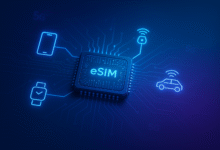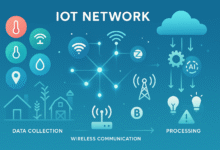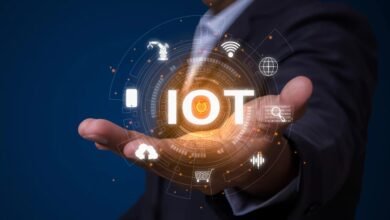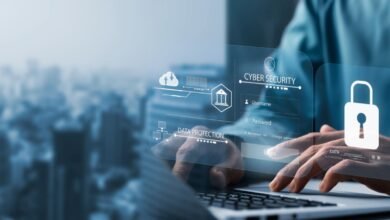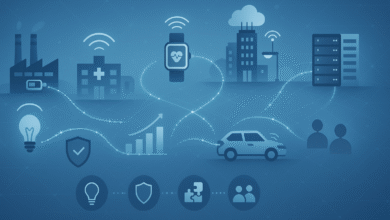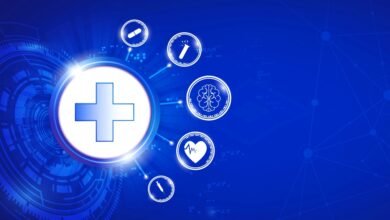Digital Twins Explained: Why They’re the Backbone of Industry 4.0
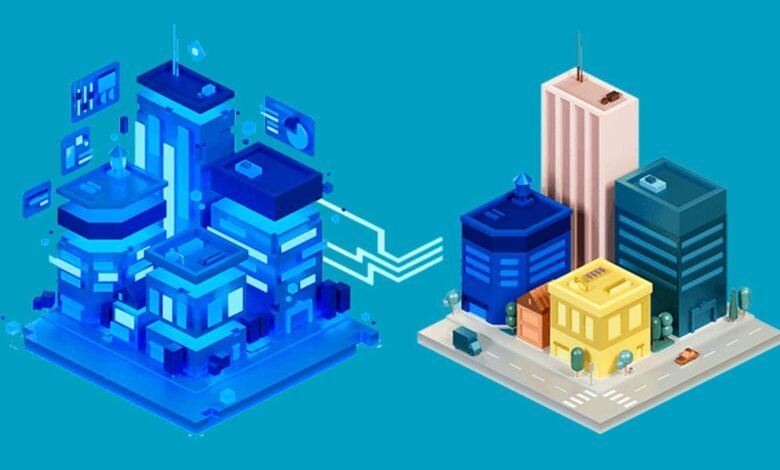
As industries worldwide embrace digital transformation, one technology is standing out as a crucial component of the Industry 4.0 revolution: digital twins. From improving operational efficiency to enabling predictive maintenance and innovation, digital twins are reshaping how businesses approach manufacturing, urban planning, healthcare, and beyond. But what exactly is a digital twin, and why is it considered the backbone of Industry 4.0?
What is a digital twin?
A digital twin is a virtual representation of a physical object, system, or process that is continuously updated with real-time data. Think of it as a high-fidelity model that mirrors its physical counterpart, allowing engineers and decision-makers to monitor, analyze, and optimize performance. The connection between the digital and physical twin is established via sensors, IoT devices, and cloud-based platforms.
Digital twins go beyond static 3D models. They incorporate data analytics, machine learning algorithms, and predictive modeling, enabling users to simulate different scenarios and understand how a product or system might behave under varying conditions. This capability is what sets them apart in the evolving landscape of smart manufacturing and intelligent automation.
The Origin and Evolution of Digital Twins
The concept of digital twins dates back to NASA’s Apollo program, where virtual models of spacecraft were used to simulate missions and troubleshoot problems from Earth. Over time, the advancement of IoT (Internet of Things), big data, and AI (Artificial Intelligence) has allowed digital twins to evolve into highly dynamic and interactive systems.
Initially adopted in the aerospace and automotive industries, digital twin technology has found applications in sectors like healthcare, energy, urban infrastructure, and supply chain management. The accessibility of real-time data and scalable computing power has made digital twins an achievable asset even for mid-sized businesses, not just tech giants.
Key Components of a Digital Twin
To understand why digital twins are indispensable in Industry 4.0, it’s important to break down their core components:
-
Physical Entity: The actual object or process being modeled, such as a turbine, vehicle, or manufacturing line.
-
Digital Replica: A virtual model built using CAD (computer-aided design), simulation tools, and real-time data streams.
-
Data Connections: IoT sensors and edge computing devices collect and transmit real-world data to the digital model.
-
Analytics and Algorithms: Tools that process data to enable predictions, optimizations, and actionable insights.
-
User Interface: Dashboards, AR/VR interfaces, or cloud platforms that allow users to interact with the digital twin.
Each of these components works synergistically to create a living model that evolves and learns over time.
Why Digital Twins Are Central to Industry 4.0
Industry 4.0 represents the fourth industrial revolution, driven by cyber-physical systems, IoT, AI, and cloud computing. At its heart is the goal of creating intelligent, autonomous systems that are capable of self-monitoring, self-correction, and optimization.
Digital twins fulfill this vision in several ways:
1. Enhanced Operational Efficiency
Digital twins provide real-time visibility into production lines and machinery. By continuously monitoring system health and performance, businesses can detect inefficiencies, bottlenecks, or deviations from standard processes. This proactive approach minimizes downtime and optimizes output, leading to significant cost savings.
2. Predictive Maintenance
Instead of relying on fixed maintenance schedules, digital twins allow for condition-based maintenance. Machine learning algorithms analyze historical and real-time data to predict when a component might fail. This enables timely interventions, reducing the risk of catastrophic failures and extending the lifecycle of equipment.
3. Accelerated Product Development
In the product lifecycle, digital twins play a vital role in virtual prototyping and testing. Engineers can simulate performance under various conditions, test design changes, and gather feedback before physical production. This iterative process shortens time-to-market and reduces R&D costs.
4. Improved Decision Making
With access to a constant stream of accurate, actionable data, businesses can make better-informed decisions. Whether it’s adjusting supply chain strategies or responding to market demands, digital twins offer a data-driven foundation for agile and strategic operations.
5. Sustainability and Resource Optimization
In an era of growing environmental concerns, digital twins help monitor energy consumption, emissions, and resource use. Organizations can simulate different sustainability scenarios, track carbon footprints, and optimize resource allocation, aligning with ESG goals and regulatory compliance.
Applications Across Industries
The versatility of digital twins means they’re not limited to factories or machines. Here are some of the most impactful use cases across sectors:
Manufacturing
Smart factories use digital twins to model production processes, equipment behavior, and even worker ergonomics. This enhances automation, reduces waste, and improves product quality.
Healthcare
Hospitals and biotech firms use digital twins to simulate patient organs, predict treatment responses, and personalize medicine. For instance, a digital twin of a heart can help cardiologists plan surgeries more effectively.
Smart Cities
Urban planners use digital twins to simulate traffic flow, manage utilities, and optimize infrastructure development. Cities like Singapore and Helsinki have embraced digital twins to enhance urban resilience and citizen services.
Energy Sector
Digital twins of power grids, wind turbines, and oil rigs enable real-time monitoring and predictive maintenance. This ensures an uninterrupted energy supply and reduces the environmental impact of operations.
Automotive and Aerospace
Companies use digital twins to simulate driving conditions, test safety features, and monitor vehicle performance post-sale. In aerospace, they help monitor aircraft health, reducing maintenance costs and ensuring safety compliance.
Challenges and Limitations
Despite their immense potential, the deployment of digital twins comes with certain challenges:
-
Data Integration: Integrating data from multiple systems, formats, and sources can be complex and time-consuming.
-
Cybersecurity Risks: As digital twins are deeply connected to physical infrastructure, they present a potential attack surface for cyber threats.
-
High Initial Costs: While long-term benefits are clear, the upfront investment in sensors, platforms, and integration can be a barrier for some organizations.
-
Skill Gaps: Implementing and maintaining digital twin systems requires expertise in data science, IoT, software development, and domain-specific knowledge.
However, as technology matures and becomes more accessible, these barriers are gradually being lowered.
The Future of Digital Twins in Industry 4.0
The future holds even more promise as digital twins continue to evolve in tandem with technologies like 5G, edge computing, augmented reality (AR), and blockchain.
-
Edge computing will allow faster processing of data at the source, making digital twins more responsive.
-
5G will enable real-time data transmission even in remote or mobile environments.
-
AR/VR interfaces will offer immersive interaction with digital models, improving collaboration and training.
-
Blockchain can add an extra layer of security and traceability in industries like pharmaceuticals and food supply chains.
Digital twins are also expected to become more autonomous, driven by advancements in generative AI and self-learning systems. These autonomous twins will be capable of making decisions, optimizing performance, and even orchestrating other connected systems with minimal human intervention.
How to Implement a Digital Twin Strategy
For organizations looking to leverage digital twins, here’s a practical roadmap:
-
Identify the Use Case: Focus on high-value assets or processes that could benefit from real-time insights.
-
Set Clear Objectives: Define what you want to achieve—reduced downtime, better efficiency, cost savings, etc.
-
Invest in Data Infrastructure: Ensure you have the right sensors, IoT devices, and data storage solutions.
-
Choose the Right Platform: Select digital twin platforms that align with your goals and are compatible with your existing systems.
-
Start Small and Scale: Begin with a pilot project, gather insights, and expand the scope as you build confidence and expertise.
-
Ensure Security and Compliance: Implement cybersecurity best practices and comply with data regulations from the outset.
Conclusion: Digital Twins as the Cornerstone of Industry 4.0
Digital twins are not just another trend—they are a transformative force in the ongoing industrial revolution. By creating a dynamic bridge between the physical and digital worlds, they empower businesses to operate more intelligently, efficiently, and sustainably.
As Industry 4.0 continues to evolve, organizations that embrace digital twin technology will be better equipped to innovate, adapt, and lead in their respective markets. Whether you’re a manufacturer, healthcare provider, city planner, or energy firm, the time to invest in digital twins is now.
